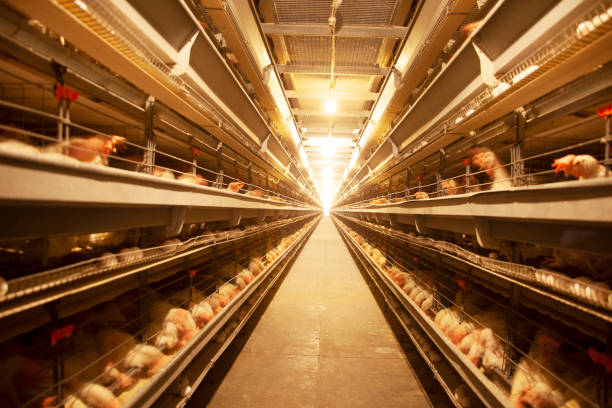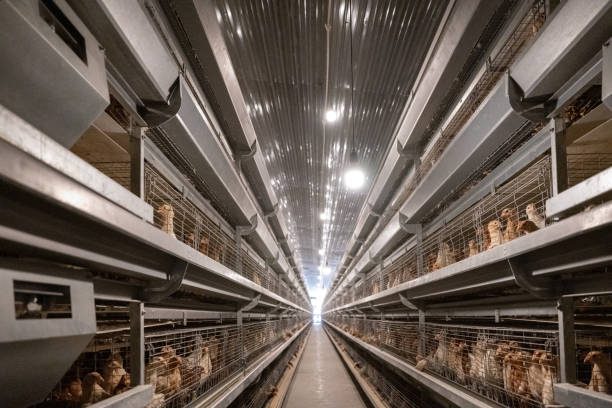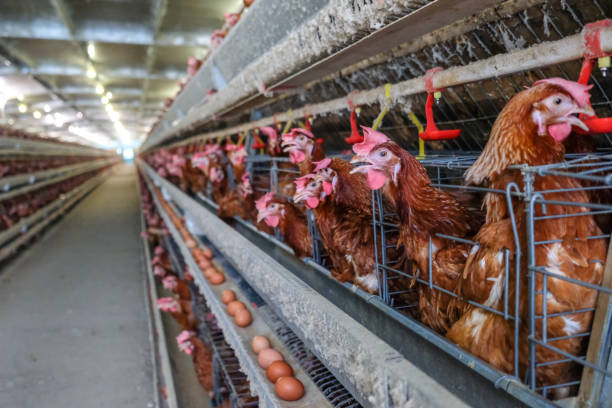
Brooder Cage Business Plan: Minimizing Initial Investment for Maximum Returns
Brooder Cage Business Plan: Minimizing Initial Investment for Maximum Returns

Starting a poultry business, especially focusing on raising chicks with brooder cages, can be a lucrative venture. However, the initial investment can be a significant hurdle for many aspiring farmers. This article focuses on developing a robust business plan that minimizes initial investments while maximizing potential returns in the brooder cage business. We’ll explore strategies for cost-effective setup, efficient management, and smart marketing to ensure a profitable start.
Understanding the Brooder Cage Business Landscape
Before diving into the specifics of minimizing investment, it’s crucial to understand the modern brooder cage business landscape. This encompasses market demand, common challenges, and opportunities for innovation.
Market Demand: The demand for chicks is consistently high, driven by both small-scale farmers and larger poultry operations needing to replenish their flocks. Whether you’re catering to backyard chicken keepers or supplying larger commercial farms, understanding your target market is key. Do your homework and determine the specific breeds and quantities needed in your area.
Common Challenges: Brooder cage operations face several challenges, including disease outbreaks, high feed costs, and maintaining optimal environmental conditions. A well-thought-out plan must address these potential pitfalls proactively. Furthermore, electricity costs can be a considerable expense, especially in regions with unreliable power grids.
Opportunities for Innovation: The poultry industry is constantly evolving. Opportunities exist to differentiate your business through specialized breed selection, organic chick production, or offering value-added services like chick vaccination programs or consulting. Additionally, exploring renewable energy sources can significantly reduce operational costs and environmental impact.
Phase 1: Planning and Market Research – Laying the Foundation
The cornerstone of any successful business is a solid plan grounded in thorough market research. This initial phase is the most cost-effective way to prevent future problems.
Defining Your Niche: Identify your target market. Will you focus on supplying day-old chicks to local farmers? Will you specialize in specific breeds, such as layers or broilers? Understanding your niche allows you to tailor your operations and marketing efforts, optimizing resource allocation.
Market Analysis: Research local demand, competitor pricing, and preferred breeds. Talk to poultry farmers, visit local markets, and analyze online resources. Knowing your market will enable you to accurately project sales and avoid overproduction.
Business Plan Development: Create a detailed business plan outlining your goals, strategies, and financial projections. This plan should include a SWOT analysis (Strengths, Weaknesses, Opportunities, and Threats), a marketing strategy, and a detailed financial forecast outlining startup costs, operating expenses, and revenue projections.
Securing Funding (If Needed): If your initial investment requires external funding, explore options like small business loans, grants, or crowdfunding. A well-prepared business plan will significantly increase your chances of securing funding.
Phase 2: Minimizing Initial Investment in Infrastructure

The biggest chunk of initial investment usually revolves around infrastructure. Smart choices here can significantly reduce your upfront expenses without compromising quality.
Choosing the Right Brooder Cages: Brooder cages are essential for providing a controlled environment for chicks. Instead of opting for the most expensive models, consider cost-effective alternatives. Evaluate different materials, sizes, and features based on your specific needs. Livi Machinery as a professional poultry equipment supplier offers a range of poultry cages that can be tailored to your budget. Prioritize durability and ease of cleaning to minimize long-term maintenance costs. Consider the climate and environmental conditions of your location when selecting cages.
DIY Solutions (Where Possible): Explore do-it-yourself solutions for certain aspects of your setup, such as building simple feeders or waterers. Recycled materials can often be repurposed, reducing waste and saving money. However, prioritize safety and hygiene, ensuring that DIY solutions meet the necessary standards.
Optimizing Space Utilization: Efficiently utilize your available space to maximize chick capacity. Proper layout and organization will not only increase productivity but also minimize the need for additional infrastructure. Vertical integration can be a space-saving solution, especially in densely populated areas.
Ventilation and Heating: Invest in cost-effective ventilation and heating systems. Natural ventilation can significantly reduce electricity costs, especially in temperate climates. Energy-efficient heating options, such as infrared lamps or gas brooders, can minimize energy consumption.
Watering and Feeding Systems: Choose efficient and affordable watering and feeding systems. Nipple drinkers minimize water wastage and prevent contamination. Simple, durable feeders can be easily constructed or purchased at a reasonable price. Automatic systems can be added later as your business grows and becomes more profitable.
Phase 3: Smart Management for Operational Efficiency
Efficient management is key to minimizing ongoing expenses and maximizing profitability.
Feed Management: Feed is a major expense in any poultry operation. Implement a strict feed management program to minimize wastage and ensure optimal chick growth. Use high-quality feed formulated specifically for chicks. Consider supplementing with locally sourced ingredients to reduce costs. Regularly monitor chick weight and adjust feed rations accordingly.
Disease Prevention: Implement a robust biosecurity program to prevent disease outbreaks. Strict hygiene practices, regular disinfection, and vaccination protocols are crucial. Quarantine new chicks before introducing them to the main flock. Consult with a veterinarian regularly to monitor chick health and address any potential problems.
Waste Management: Proper waste management is essential for maintaining a healthy environment and preventing disease. Implement a composting system to turn waste into valuable fertilizer. This not only reduces waste disposal costs but also provides a source of revenue.
Record Keeping: Maintain accurate records of chick health, feed consumption, and mortality rates. This data will help you identify potential problems early on and optimize your management practices. Utilize software or spreadsheet programs to streamline your record-keeping process.
Energy Efficiency: Implement energy-saving measures throughout your operation. Use energy-efficient lighting, insulate buildings to minimize heat loss, and explore renewable energy sources. Consider installing timers on lights and heaters to reduce energy consumption during off-peak hours.
Phase 4: Marketing and Sales Strategies for Rapid Growth
Effective marketing is crucial for securing customers and driving sales.
Local Market Focus: Focus on the local market to minimize transportation costs and build strong relationships with customers. Attend farmers’ markets, agricultural fairs, and poultry shows to promote your business.
Online Presence: Create a website or social media page to showcase your chicks and reach a wider audience. Use effective SEO (Search Engine Optimization) techniques to improve your online visibility. Share informative content about chick care and poultry farming to establish yourself as an expert in the field.

Partnerships: Collaborate with local feed stores, veterinary clinics, and agricultural suppliers to promote your business. Offer discounts to customers who purchase chicks in bulk or refer new clients.
Customer Service: Provide excellent customer service to build customer loyalty and generate repeat business. Respond promptly to inquiries, address customer concerns, and provide helpful advice.
Competitive Pricing: Offer competitive pricing to attract customers. Analyze your competitors’ prices and adjust your own accordingly. Consider offering discounts or promotions to incentivize purchases. Emphasize the quality of your chicks and the value you provide to justify your pricing.
Phase 5: Continuous Improvement and Adaptation
The brooder cage business is dynamic, and continuous improvement is essential for long-term success.
Monitoring Performance: Regularly monitor your key performance indicators (KPIs), such as chick mortality rates, feed conversion ratios, and sales figures. Identify areas where you can improve efficiency and profitability.
Seeking Feedback: Solicit feedback from customers to identify areas where you can improve your products and services. Use surveys, online reviews, and direct communication to gather valuable insights.
Staying Updated: Stay updated on the latest trends and best practices in the poultry industry. Attend industry conferences, read trade publications, and network with other poultry farmers to learn about new technologies, management strategies, and market opportunities.
Adapting to Change: Be prepared to adapt to changing market conditions and customer preferences. Be flexible and willing to adjust your business plan as needed. Embrace innovation and continuously seek new ways to improve your operations.
Conclusion
Starting a brooder cage business with a minimal initial investment is achievable with careful planning, smart management, and effective marketing. By prioritizing cost-effective infrastructure, efficient operations, and customer-focused strategies, you can minimize your financial risks and maximize your potential returns. Remember that continuous learning and adaptation are essential for long-term success in the ever-evolving poultry industry. Focusing on quality chicks, exceptional customer service, and a commitment to sustainable practices will set you apart from the competition and establish a thriving business. By following these guidelines, the aspiring poultry farmer can build a strong foundation for a profitable and rewarding venture in the brooder cage business. Remember that working with reliable suppliers like Livi Machinery, who understand the need to balance quality with affordability, is also a key component in reducing initial expense and maximizing returns.
